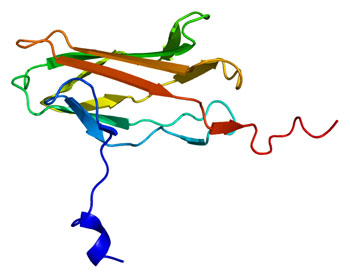Phosphorylation Turns a Tumor Suppressor into a Promoter of Cancer Development
By LabMedica International staff writers
Posted on 03 Aug 2016
Cancer researchers have determined the molecular mechanism by which a modification to the protein encoded by the RUNX3 gene turns a tumor suppressor into a promoter of cancer development and progression.Posted on 03 Aug 2016
There are three mammalian RUNX genes, RUNX1, RUNX2, and RUNX3, all of which are associated with oncogenic activities. While RUNX3 is a key tumor suppressor in many tissue types such as gastric, colon and bladder, it promotes oncogenesis in ovarian and skin cancers. The RUNX3 gene encodes a member of the runt domain-containing family of transcription factors. A heterodimer of this protein and a beta subunit forms a complex that binds to the core DNA sequence found in a number of enhancers and promoters and can either activate or suppress transcription. It usually functions as a tumor suppressor, and the gene is frequently deleted or transcriptionally silenced in cancer.

Image: A structural model of the RUNX3 protein (Photo courtesy of Wikimedia Commons).
Investigators at the National University of Singapore (Singapore) reported in the May 23, 2016, online edition of the journal Proceedings of the [U.S.] National Academy of Sciences that the phosphorylation of the threonine 173 (T173) residue within the Runt domain of RUNX3 disrupted RUNX DNA binding activity during mitotic entry to facilitate the recruitment of RUNX proteins to mitotic structures. Moreover, knockdown of RUNX3 delayed mitotic entry.
Phosphorylation of the RUNX3 protein was found to be carried out by the Aurora kinase enzyme, which is present in unusually high levels in some cancers. Phosphorylation prevented the binding of RUNX3 to DNA, resulting in RUNX3 relocating to centrosomes where it promoted uncontrolled cell division.
”Unlike other modifications which stem from changes to the RUNX3 DNA itself or how DNA is read, phosphorylation does not accompany any changes in the DNA and is hence undetectable at the genetic level. Given that modifications such as phosphorylation are likely to be impermanent and reversible, the clinical implications are far ranging. Moving forward, the team is looking into ways to assess the feasibility of enhancing RUNX tumor suppression or inhibiting RUNX mitotic function to kill rapidly proliferating cancer cells,” said senior author Dr. Yoshiaki Ito, professor of medical oncology at the National University of Singapore.
Related Links:
National University of Singapore




 assay.jpg)









